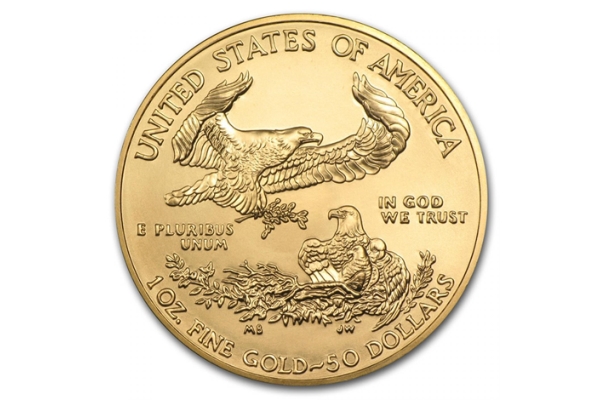
Two US Congressmen are demanding answers from the US Mint and Secret Service on their efforts to crackdown on counterfeit gold and silver coins that are increasingly entering the country.
In a letter to the two organisations, Republican Congressmen Alex Mooney and Frank Lucas urged aggressive action on the “growing problem of high-quality counterfeits of US precious metal coins” entering the US from China and other countries.
“Given reports of the growing problem of high-quality counterfeits of US precious metal coins entering the country from China and elsewhere, we wish to learn more about the US Mint’s actions with respect to counterfeits of its current-issue US gold and silver coins,” the Congressmen said.
Enclosed with the letter was a 1995 1 oz. Gold American Coin, carrying a face value of $50 and ostensibly minted by the US Mint.
“You are free to keep it, as it’s a worthless tungsten fake,” the Congressmen wrote. “We are sending it to you because it’s our understanding that the Department of Homeland Security’s US Secret Service was not inclined to investigate the origin of this and a related batch of these counterfeit gold American eagle coins when the matter was recently brought to its attention.”
As members of the House Financial Services subcommittee, which oversees the US Mint, Mooney and Lucas have requested information on the “nature and quantity of complaints” of counterfeit US gold, silver and platinum coins within the past two years, as well as the resulting investigations.
They have also asked what anti-counterfeiting programmes are currently in place to protect US precious metal coins and have sought information on whether the US Mint has reviewed the anti-counterfeiting measures implemented by the governments of other countries “and whether the US Mint is preparing to implement any technologies to protect the integrity of America’s coins minted of gold, silver, and platinum and palladium”.
They also seek clarification of the “expected roles” of the Secret Service, US Customs and Border Enforcement, and other law enforcement agencies in detecting and investigating counterfeits of US precious metal coins and the extent of co-ordination with the US Mint in achieving this.
In response, to the Congressmen’s letter, Stefan Gleason, director of the Sound Money Defense League commended the actions for exercising Congressional oversight duties. “We look forward to meaningful explanation from the US Mint and the Secret Service for what appears to be a lackadaisical attitude toward protecting the only constitutional currency that is currently even produced by the federal government.”
The letter was addressed to the attention of the acting principal deputy director of the US Mint David Moti, but the confirmation hearing for the nominee for the director position was held last week. If confirmed David Ryder would become the 39th director of the US Mint – previously holding the position as 34th director from 1992 to 1993.
During his nomination hearing, Ryder said tackling counterfeit coins, particularly US bullion coins, would be among his top priorities in the job, calling it a “critical issue” in light of the high-quality counterfeits entering the US from China, Coin World reported.
Ryder has formerly worked in the private sector on currency anticounterfeiting and security and was involved with the development of the new British £1 coin, which is considered to be the most advanced and secure coin in circulation in the world.
The production and ownership of copies of US coins is not prohibited, but by law, the replicas must be clearly stamped on one side with the word COPY. Increasingly, however, fakes without the word COPY have entered the US, particularly from China, fooling collectors and dealers alike.
In December 2014, then President Barack Obama sought to strengthen the law by signing the Collectible Coin Protection Act, which expediates law enforcement and seizures of counterfeit coins.
Meanwhile, in Canada, the Royal Canadian Mint is investigating “pure gold” wafers which appear to contain no gold at all. A one-ounce gold piece had been purchased from a Royal Bank of Canada branch but was now undergoing tests at the Royal Canadian Mint.
©
SecuringIndustry.com





